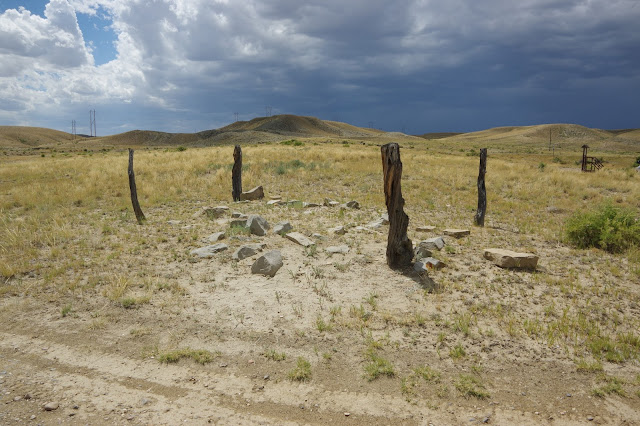In the past, I haven't tended to post fort entries here, but for net related technical reasons, I'm going to, even though these arguably belong on one of my other blogs. I'll probably cross link this thread in.
These are photographs of Ft. Fred Steele, a location that I've sometimes thought is the bleakest historical site in Wyoming.
One of the few remaining structures at Ft. Steele, the powder magazine. It no doubt is still there as it is a stone structure.
The reason that the post was built, the Union Pacific, is still there.
What the post was like, when it was active.
A number of well known Wyoming figures spent time at Ft. Saunders.
Ft. Sanders, after it was abandoned, remained a significant railhead and therefore the area became the center of a huge sheep industry. Quite a few markers at the post commemorate the ranching history of the area, rather than the military history.
One of the current denizens of the post.
Suttlers store, from a distance.
Union Pacific Bridge Tenders House at the post.
Current Union Pacific bridge.
Some structure from the post, but I don't know what it is.
The main part of the post's grounds.
Soldiers from this post are most famously associated with an action against the Utes in Utah, rather than an action in Wyoming. This shows the high mobility of the Frontier Army as Utah is quite a distance away, although not so much by rail.
This 1914 vintage highway marker was on the old Lincoln Highway, which apparently ran north of the tracks rather than considerably south of them, like the current Interstate Highway does today.
About 88 people or so were buried at this post, however only 60 some graves were later relocated when the Army undertook to remove and consolidate frontier graves. Logic would dictate, therefore, that some graves likely remain.
Unusual civilian headstone noting that this individual had served with a provisional Confederate unit at some point that had been raised in California. I'm not aware of any such unit, although it must have existed. The marker must be quite recent.















































































































